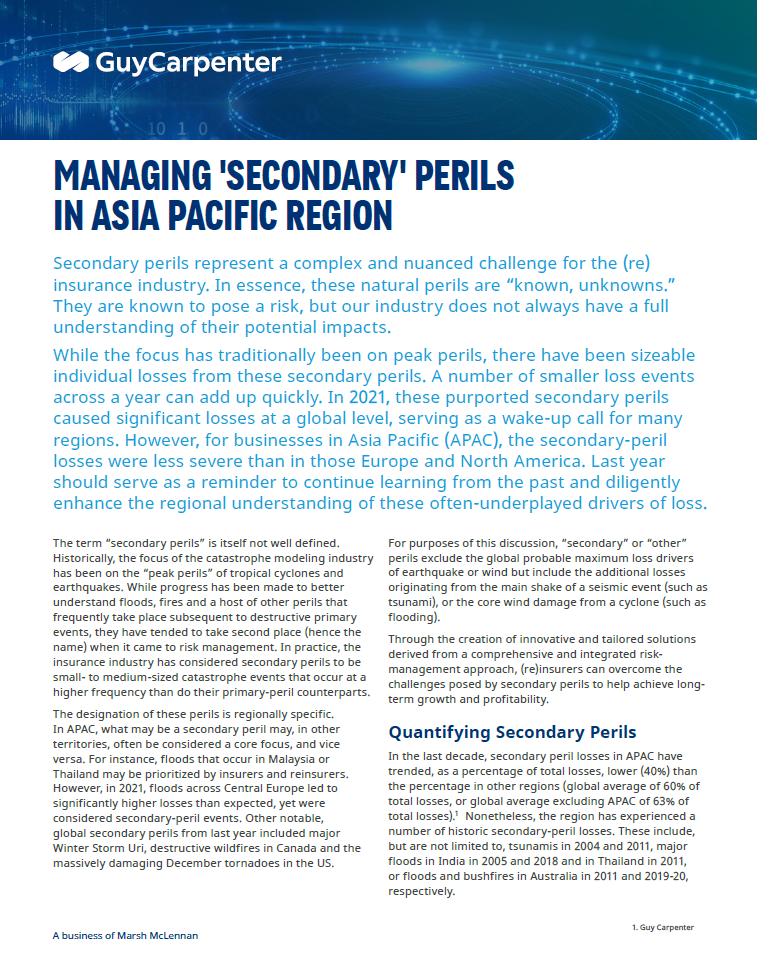Managing 'Secondary' Perils in Asia Pacific Region
Brought to you by:

Secondary perils represent a complex and nuanced challenge for the (re) insurance industry. In essence, these natural perils are “known, unknowns.” They are known to pose a risk, but our industry does not always have a full understanding of their potential impacts.
While the focus has traditionally been on peak perils, there have been sizeable individual losses from these secondary perils. A number of smaller loss events across a year can add up quickly. In 2021, these purported secondary perils caused significant losses at a global level, serving as a wake-up call for many regions. However, for businesses in Asia Pacific (APAC), the secondary-peril losses were less severe than in those in Europe and North America. Last year should serve as a reminder to continue learning from the past and diligently enhance the regional understanding of these often-underplayed drivers of loss.
The term “secondary perils” is itself not well defined. Historically, the focus of the catastrophe modeling industry has been on the “peak perils” of tropical cyclones and earthquakes. While progress has been made to better understand floods, fires and a host of other perils that frequently take place subsequent to destructive primary events, they have tended to take second place (hence the name) when it came to risk management. In practice, the insurance industry has considered secondary perils to be small- to medium-sized catastrophe events that occur at a higher frequency than do their primary-peril counterparts.
The designation of these perils is regionally specific. In APAC, what may be a secondary peril may, in other territories, often be considered a core focus, and vice versa. For instance, floods that occur in Malaysia or Thailand may be prioritized by insurers and reinsurers. However, in 2021, floods across Central Europe led to significantly higher losses than expected, yet were considered secondary-peril events. Other notable, global secondary perils from last year included major Winter Storm Uri, destructive wildfires in Canada and the massively damaging December tornadoes in the US.
For purposes of this discussion, “secondary” or “other” perils exclude the global probable maximum loss drivers of earthquake or wind but include the additional losses originating from the main shake of a seismic event (such as tsunami), or the core wind damage from a cyclone (such as flooding).
Through the creation of innovative and tailored solutions derived from a comprehensive and integrated risk- management approach, (re)insurers can overcome the challenges posed by secondary perils to help achieve long- term growth and profitability.
Read the full article on the website:
https://www.guycarp.com/insights/2022/04/briefing-discusses-managing-secondary-perils-asia-pacific.html
| Download the full article in pdf: |
|

|
| |
|